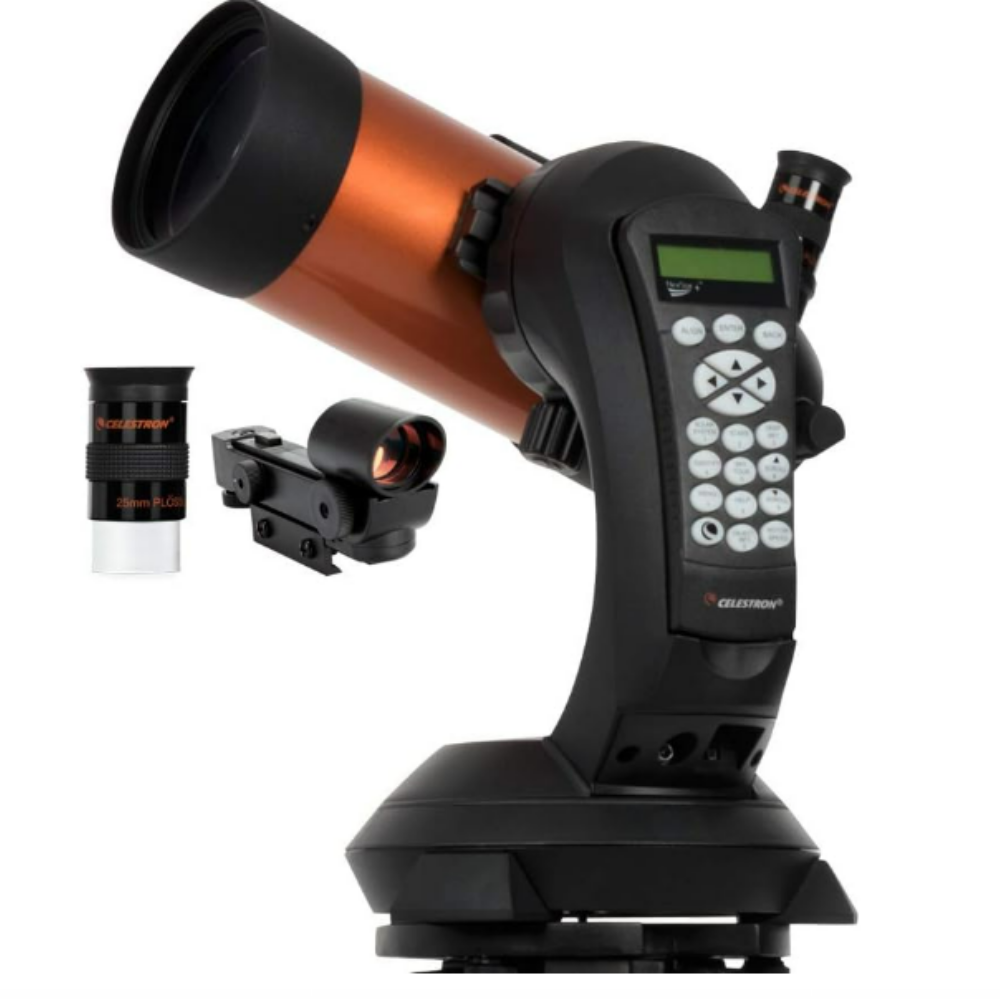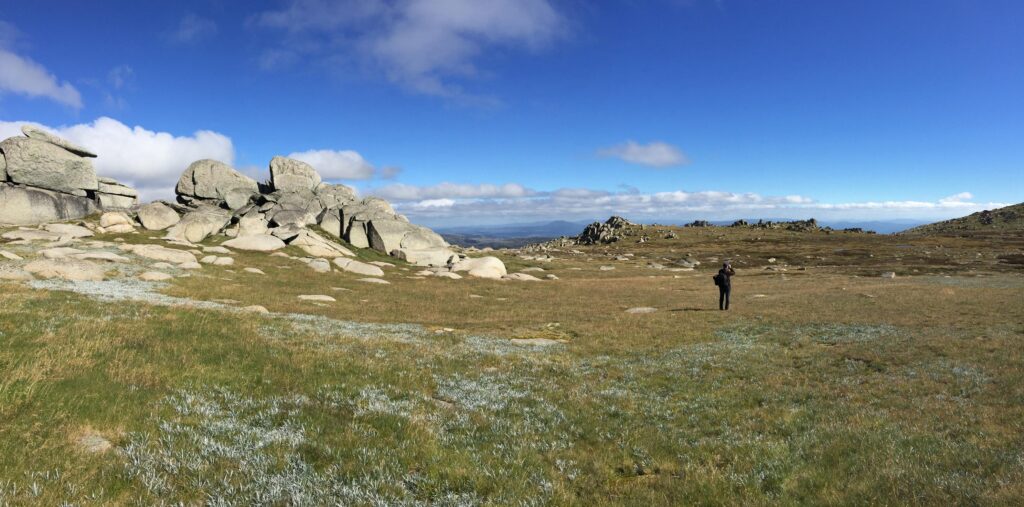The new moon of May occurs on May 26. Two days later the moon will make a close pass to Jupiter in the evening sky, and the summer constellations will be rising.
New moons happen when the moon is directly between Earth and the sun. They share a celestial longitude (called right ascension by astronomers), a projection of the Earth’s longitude lines on the sky measured eastward from the point where the sun crosses the celestial equator. This position is also called a conjunction. If the sun and the moon line up perfectly the result is a solar eclipse; but that does not happen most of the time, as the moon’s orbit is tilted 5 degrees relative to Earth’s orbit. (The next solar eclipse is due on Sept. 21).
That means seeing the new moon isn’t possible, due to the sun’s glare. Even if the sun were blocked, the moon would be facing away from us, showing the dark side, which would just be black on a black background.
Lunar phases are determined by the moon’s position, rather than one’s position on Earth, so to find the time of a lunar phase one only needs to count the hours difference from Universal Coordinated Time in London to whatever time zone.
So, when the moon reaches the new phase in New York, it will do so at 8:02 p.m. on May 26, at 11:02 p.m. Eastern Daylight Time (0302 UTC May 27), according to the U.S. Naval Observatory. It will do so at 8:02 p.m. (May 26) in Los Angeles, 4:02 a.m. May 27 in Paris, and 12:02 p.m. May 27 in Tokyo.
Visible planets
On May 26 the sun sets at 8:16 p.m. in New York, according to the U.S. Naval Observatory; the longer days of the Northern Hemisphere late spring and summer months start to become apparent. Sunset actually gets earlier as one moves south because in the tropics, between latitudes 23.5 degrees north, the Tropic of Cancer, and 23.5 degrees south, the Tropic of Capricorn, the day length doesn’t change much over the course of the year the way it does in more northerly or southerly regions. In Miami, which is only about two degrees north of the Tropical latitudes, sunset on May 26 is at 8:05 p.m. The reverse is true in the Southern Hemisphere where days are getting shorter – sunset in Buenos Aires is at 5:52 p.m. local time.
In New York, a half hour after sunset, one might still be able to catch Jupiter, which will be about 10 degrees high in the west (the width of your fist at arm’s length equals around 10 degrees in the sky).
The sky will still be a little bit light as civil twilight, when the sun is 6 degrees below the horizon, ends at 8:49 p.m. Jupiter will therefore be hard to see, but as the sky gets darker it will start to come out. It won’t be up for long, though; the planet sets at 9:54 p.m. local time.
TOP TELESCOPE PICK:
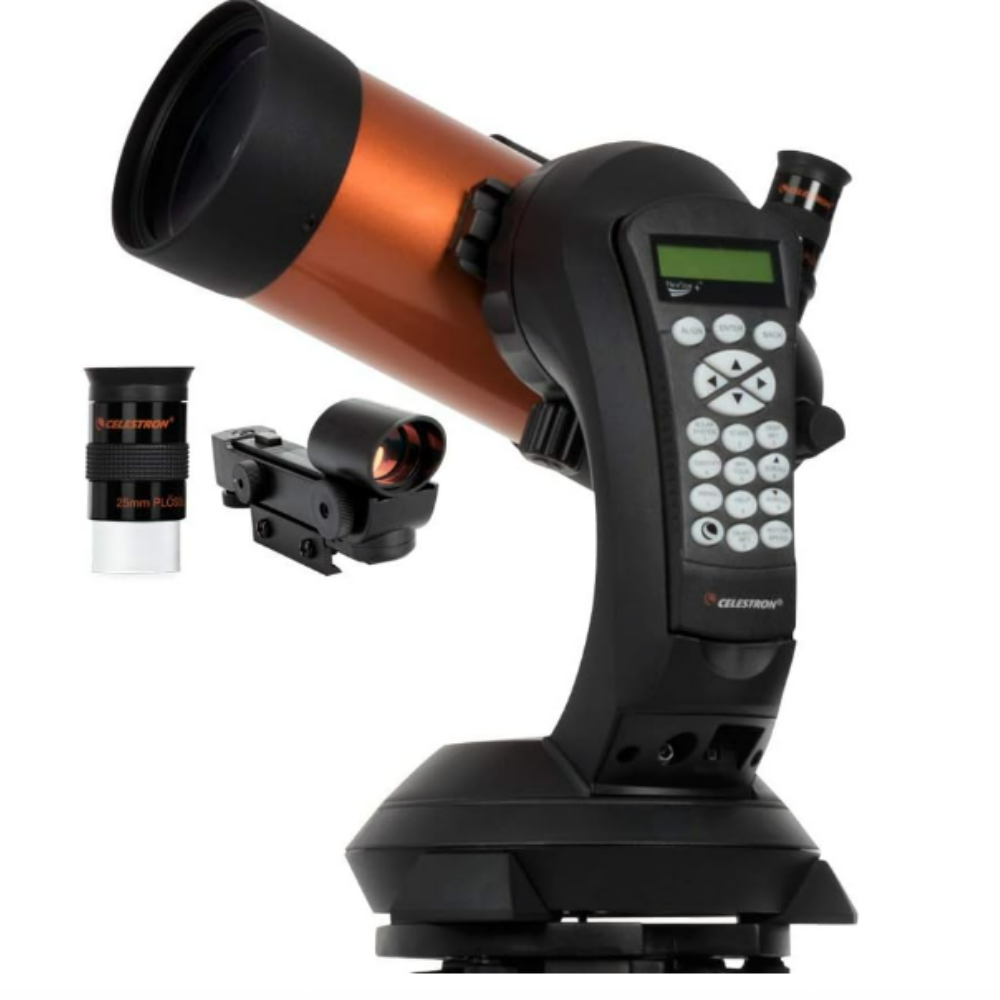
Want to see the wonders of the night sky? The Celestron NexStar 4SE is ideal for beginners wanting quality, reliable and quick views of celestial objects. For a more in-depth look at our Celestron NexStar 4SE review.
Mars will be about halfway up the sky – 44 degrees high – in the southwest at about 9 p.m. Eastern Time, and sets at 1:02 a.m. May 27. The planet is distinctly reddish, though dimmer than usual as it is in a part of its orbit that is receding from Earth. It is still relatively bright, however, and its steady light makes it easily recognizable near stars that twinkle.
Saturn, in the constellation Aquarius, rises at 2:42 a.m. May 27, and Venus follows at 3:29 a.m. By 4:30 a.m. Saturn and Venus will be respectively 19 degrees and 11 degrees high, with Venus almost due east and Saturn more to the southeast. Sunrise in New York City is at 5:29 a.m.
On May 28 the conjunction of the moon and Jupiter will happen at 9:13 a.m. in New York, so the moment when the two bodies are at closest approach to each other won’t be observable from there. But by 9:00 p.m. that evening the thin crescent moon will be low in the western sky and Jupiter will appear almost directly below it. The sun’s lingering light will make it a challenging observation; with a clear sky and unobstructed horizon one should be able to make them both out.
The conjunction will be more visible in Asia, where it happens late enough that the day-old moon, appearing as a thin crescent, and Jupiter are both above the horizon still as the sky is darkening. In Dhaka, Bangladesh, for example, sunset is at 6:41 p.m. local time and the moon and Jupiter will become visible at about 7:00 p.m. The conjunction itself is at 7:13 p.m. local time according to In-the-sky.org; Jupiter sets at 8:04 p.m. from Dhaka, and the moon will look as though it is directly above Jupiter and slightly to the left.
From Yangon, Myanmar, the conjunction occurs at 7:13 p.m. local time, and Jupiter is 18 degrees high at sunset, which is at 6:33 p.m. At the moment of conjunction, the planet will be 9 degrees above the horizon, accompanied by the thin crescent moon on the right.
If you’re looking for a telescope or binoculars to observe planets in the night sky, our guides for the best binoculars deals and the best telescope deals now can help. Our guides on the best cameras for astrophotography and best lenses for astrophotography can also help you prepare to capture the next skywatching sight.
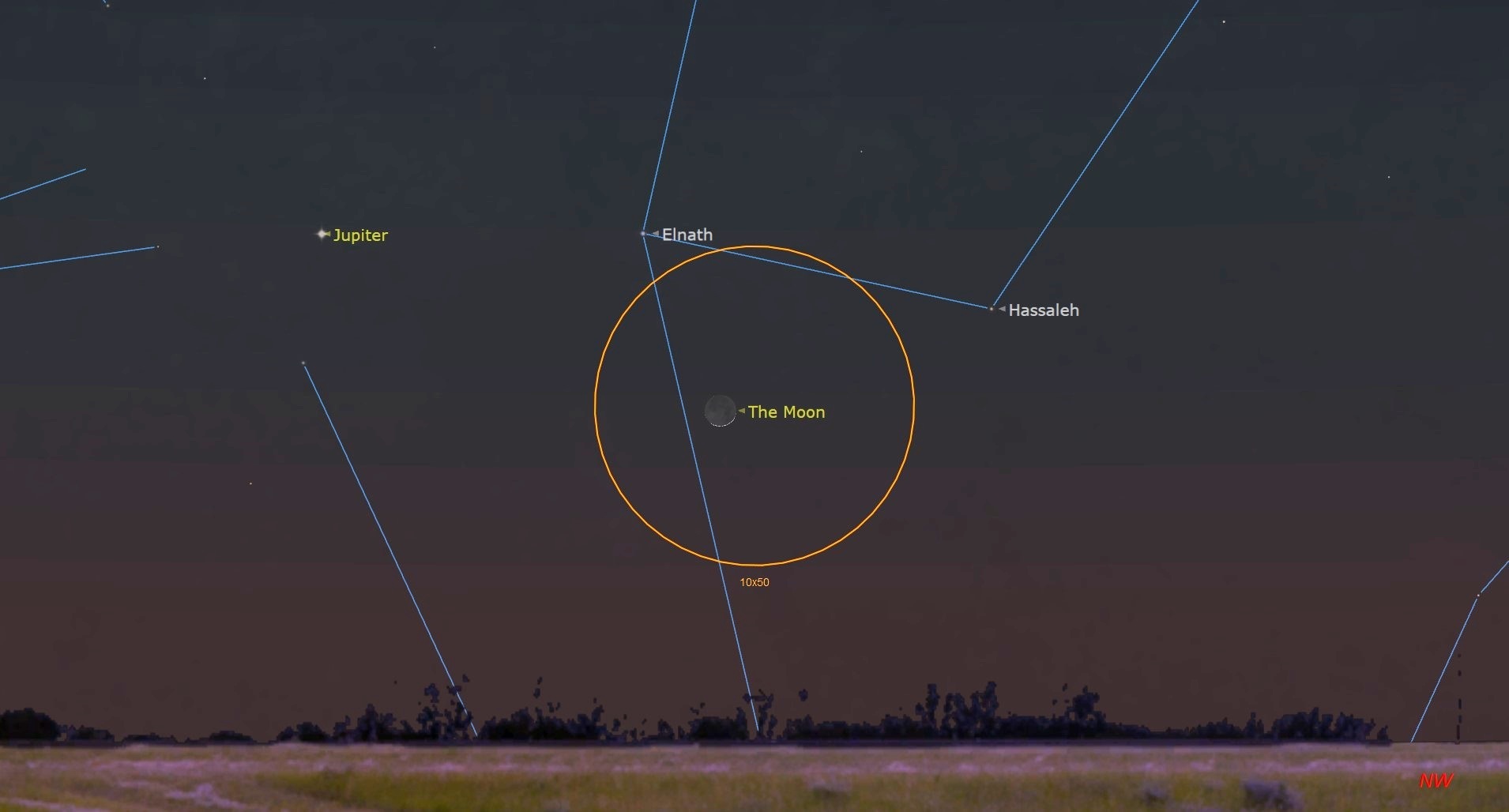
Constellations
In mid-northern latitudes, late May is when the days get significantly longer than in the spring. In such locales it doesn’t get fully dark (to the eye) until at least 9:30 p.m. – in New York City astronomical twilight, when the sun is between 12 and 18 degrees below the horizon and the last of the daylight disappears, ends at 10:15 p.m. on May 26.
At 10 p.m., as one can look southwest and see Mars, which will be among the stars of Leo the Lion. Leo will be about halfway to the zenith in the sky at this hour. Regulus, Leo’s alpha star, will be to the left of Mars, and that marks the lower right corner of the rough trapezoid formed by the Lion’s body and tail. If one looks above Regulus, one sees Gamma Leonis, or Algieba, the Lion’s front shoulder, and from there one can usually spot the “sickle” that is the head and mane. To the left and up from Regulus and Algieba is Delta Leonis (Zosma). If one looks left of Zosma one will see Denebola, or Beta Leonis, the end of the Lion’s tail. Denebola and Zosma form a right triangle with Theta Leonis, or Al Haratan, the latter of which is the Lion’s hindquarters.
Looking north, one can orient with the Big Dipper, almost directly above the northern horizon (at 10 p.m. it will be a bit to the left, in the north-northwestern direction). The bowl will be almost upside down and the two stars that point to Polaris, the pole star, are on the left and lower side of the bowl.
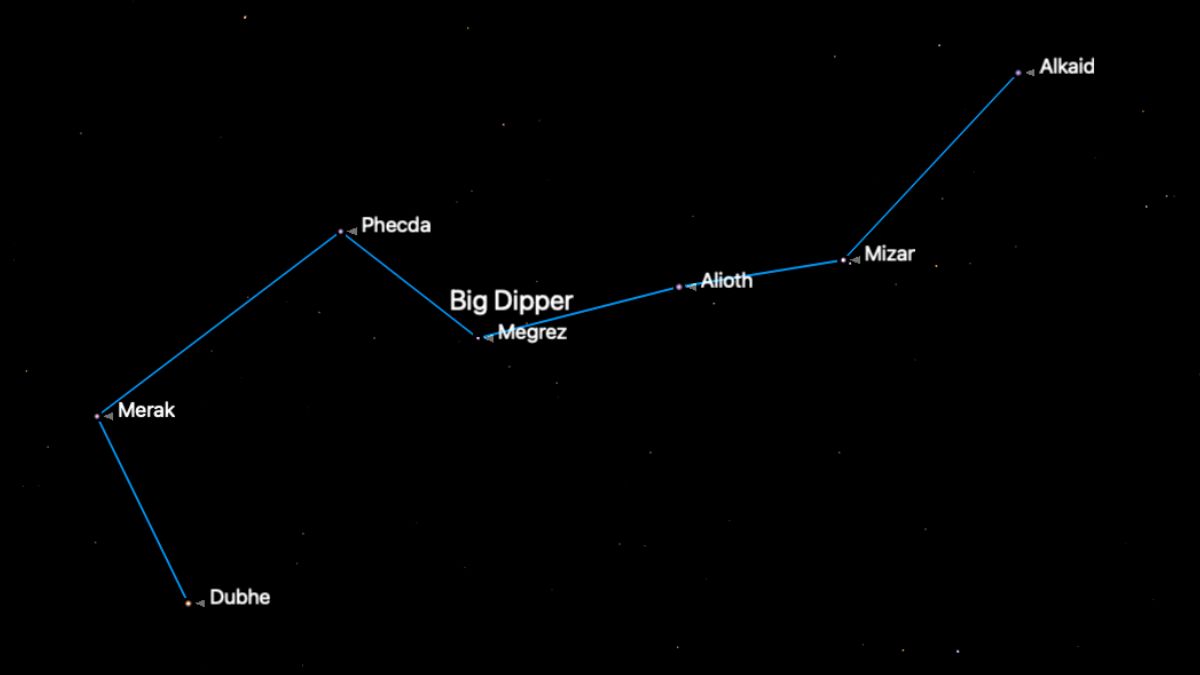
The stars are called Dubhe and Merak, and Dubhe is the one closer to Polaris – one finds Polaris by making a line between the two and continuing until one reaches Polaris. Following the handle of the Dipper one can “arc to Arcturus” –a sweeping motion along the curve of the handle gets you there, to the brightest star in Boötes, the Herdsman. Continuing that arc one hits Spica, the brightest star in Virgo. If one draws a line between Dubhe and Merak away from Polaris one reaches Leo.
In the East, Vega, the bright star of Lyra, the Lyre, is about 30 degrees high. It is bright enough that even in light-polluted areas it is distinct. Vega is one of the three stars of the Summer Triangle, the others are Deneb, the brightest star in Cygnus, the Swan, and Altair, the eye of the Eagle. By 10 p.m. Deneb is left and down from Vega, about 10 degrees above the horizon (it actually rises just after 7:00 p.m. in mid-northern latitudes, but the sky is too bright to see it until later). Altair rises at 9:54 p.m. local time in New York, and by midnight it is 23 degrees high in the east. The Summer Triangle’s narrowest point always faces southward, (it is almost a right triangle with the 90-degree angle at Deneb) so it is a good direction finder, especially as it gets higher in the sky.
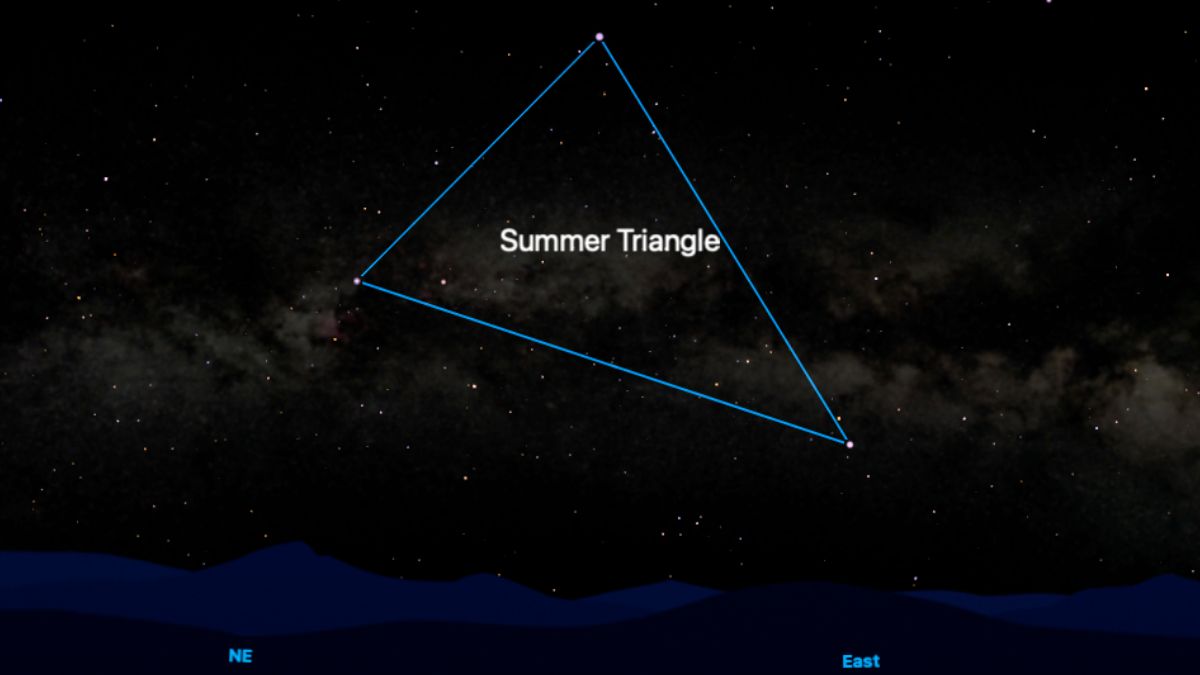
By midnight, looking southeast, about 21 degrees high (depending on how far north or south one is) one will see Antares, the brightest star (the “heart”) of Scorpius, the Scorpion. Above Antares are three medium-bright stars that form Scorpius’ head and claws. From darker-sky locations, above and to the left of Scorpius is the fainter (but much larger) constellation Ophiuchus, the Serpent Holder or Healer. Ophiuchus can be recognized by a long, almost rectangular pentagon of medium-to-faint stars that extends above Scorpius; initially (at about midnight) he will appear to be lying on his side. On either side of Ophiuchus are the constellations Serpens Caput and Serpens Cauda, the head (Caput) and the tail (Cauda) of the serpents Ophiuchus holds.
In the southern hemisphere, days are getting shorter. In Santiago, Chile, for example, the sun sets early, at 5:44 p.m. local time on May 26. That means the sky gets dark enough to see stars by 6:30 to 7:00 p.m. local time. Observers in mid-southern latitudes can see Scorpius in the east-southeast, with Antares about 15 degrees above the horizon. Looking more directly southeast, about 43 degrees high is Alpha Centauri, also called Rigil Kentaurus, our nearest stellar neighbor. Rigil Kentaurus marks the front legs of the Centaur. The Centaur represents (per Ovid) Chiron, the centaur who according to legend taught Heracles (Hercules), Jason, and Theseus.
Just above Alpha Centauri is Hadar (Beta Centauri) and looking upwards a little further is the Southern Cross (Crux). There is no pole star in the southern skies, but Crux points towards the southern celestial pole.
Turning right towards the southwest, one can see Canopus at about the same altitude as the Cross; it’s the brightest star in Carina, the Ship’s Keel.
From Carina in the Keel, as one looks to the right, towards the west one will see Sirius, the brightest star in the sky, and the alpha star of Canis Major, the Bog Dog. Between the Dog and Canopus, and above both, is Puppis, the Poop Deck. Puppis and Carina are two of three modern constellations that once made up Argo, the ship of Jason. The third constellation is Vela, an oval of seven stars (one can see nine if the sky is dark) that sits above Carina and Puppis.
